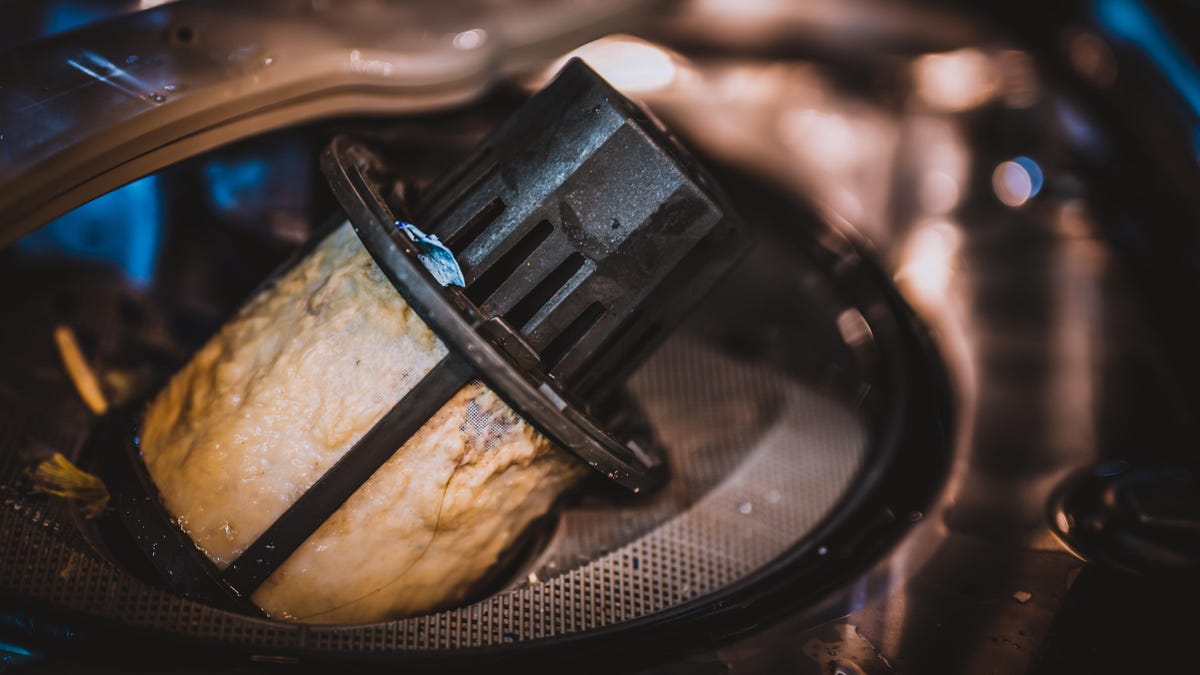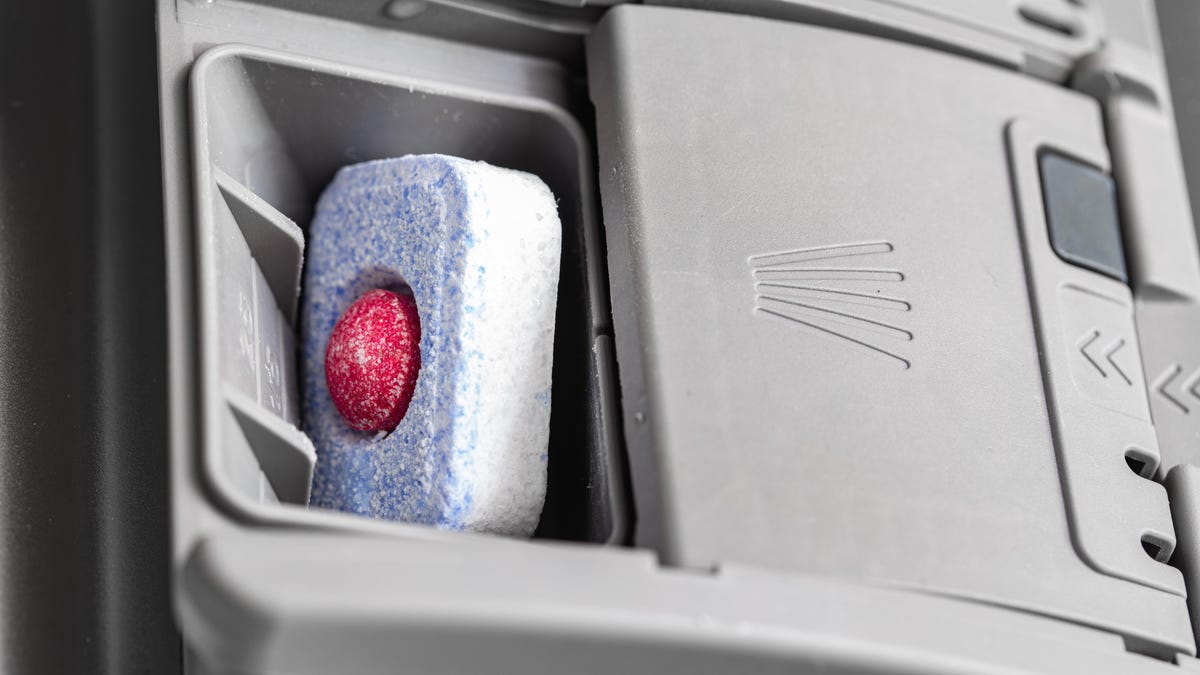How to Locate and Clean Your Dishwasher's Filter
Even though appliances have replaced many of the household tasks that were once done manually—like washing dishes and clothing—that doesn’t mean they’re completely maintenance-free. For example, we recently discussed the fact that washing machine filters exist and need to...

Even though appliances have replaced many of the household tasks that were once done manually—like washing dishes and clothing—that doesn’t mean they’re completely maintenance-free. For example, we recently discussed the fact that washing machine filters exist and need to be cleaned regularly.
As it turns out, the same is true of your dishwasher—except instead of catching fibers and lint in your laundry, this one traps food particles and debris. Here’s how to locate and clean your dishwasher’s filter, and why you should take the time to do it.
How to find your dishwasher’s filter
There are two different types of dishwasher filters: Self-cleaning and manual. The easiest way to find out about your dishwasher filter’s location, type, and how to clean it, is to check the owner’s manual. If you no longer have yours, start by searching for the manufacturer + your dishwasher’s model number. If that doesn’t work, you can try looking it up on dedicated sites like Manualsonline.com or Manual Owl.
Self-cleaning vs. manual dishwasher filters
It sounds counterintuitive, but most newer dishwashers have manual filters, while many of those manufactured more than a decade ago have filters that are self-cleaning. If you can’t find your manual, you can figure out what type of filter you have by opening the dishwasher, pulling out the bottom drawer, and looking at the bottom.
If there’s a series of holes or a plastic grid at the base of the machine covering the filter, it’s probably self-cleaning. If you find a circular cap in a corner of the tub, or around the base of the bottom spray arm, it’s likely a manual filter.
Self-cleaning dishwasher filters
Self-cleaning dishwasher filters contain a grinder—similar to a garbage disposal—that pulverizes the bits of food the filter traps, before they’re flushed away with water. These powerful (and loud) mechanisms don’t get clogged in the same way that manual filters do, but do require some basic maintenance.
To keep them in operation, occasionally run an empty dishwasher on a normal cycle using white vinegar instead of detergent. When that’s done, use a clean, damp cloth to wipe the edges of the door and tub to get rid of any lingering grime. That’s it. The rest of the article will focus on manual filters, which are now the standard.
Manual dishwasher filters
Manual dishwasher filters don’t have a food pulverizer or the powerful rushing water of the self-cleaning variety, which means they’re much quieter, and also must be removed and cleaned on a regular basis. If you’ve never cleaned yours before, the first time will be pretty gross, but if you start doing it on a regular basis—like every 30 days—there won’t be nearly as much buildup, and the whole process will be easier.
Once you’ve located the filter cap, give it a quarter turn clockwise, then gently lift it out. The filter itself will be either a cylindrical tube or a circular plastic grid.
But wait, there might be more.
Some dishwasher filters have two parts: The upper filter assembly—which collects the food particles and debris—and a lower filter, which prevents the food bits from being recirculated within the dishwasher. If yours has a second filter, carefully lift it up and pull it forward to remove it.
How to clean your dishwasher’s filter
Start by rinsing the dishwasher filter under warm, running water in the sink. If you clean your filter regularly and there’s not much buildup, that may be all you need to do.
Otherwise, fill a bucket or your sink with warm water and add a few squirts of mild dishwashing liquid. Let the filter soak for a few minutes, then check on its progress.
If any grease, mineral buildup, or other residue remains, use a soft toothbrush—nothing with abrasive bristles—to gently remove it, then rinse it with warm water. Repeat the process until the filter is clean, and the water runs clear when you rinse it.
While the filter is drying, use a clean, damp cloth to wipe the inside of the filter’s compartment. If it’s especially grimy, spray a mixture of half water and half white vinegar inside the compartment, then wipe everything out. After that, rinse the cloth (or get a new one), and wipe the bottom of the dishwasher tub and the edges of the door.
Finally, put the clean filter back into its compartment in the dishwasher. Make sure that everything feels like it fits together, and locks into place.
Why you should clean your dishwasher’s filter
All of the food crumbs, particles, and other remnants left on plates, dishes, and silverware have to go somewhere, and that place is the filter.
But when the filter is coated or clogged with waterlogged, rotting food debris, it can’t prevent those bits from recirculating and ending up back on your kitchenware. Meanwhile, it does prevent a thorough rinse cycle, so when you open your dishwasher to unload, you may notice some residue or stuck-on food.
Having a clogged filter means that your dishwasher has to work harder than usual—even for these subpar results. In other words, keeping the filter clean can help prolong the life of your dishwasher. Plus, a clogged filter could lead to a clogged drain, which could mean backed-up dirty water and a huge mess: Something you definitely want to avoid.
Why does it smell when I run my dishwasher?
Have you noticed a foul odor emanating from your dishwasher—particularly one that gets more intense when it’s running? There’s a good chance that could be your filthy filter—especially if you’ve already tried the usual white vinegar and baking soda cleaning methods. The food debris and moisture are the perfect breeding ground for stinky (and unsanitary) bacteria, and the best way to evict them is to clean your dishwasher’s filter regularly.

 Kass
Kass 





























![X Highlights Back-to-School Marketing Opportunities [Infographic]](https://imgproxy.divecdn.com/dM1TxaOzbLu_kb9YjLpd7P_E_B_FkFsuKp2uSGPS5i8/g:ce/rs:fit:770:435/Z3M6Ly9kaXZlc2l0ZS1zdG9yYWdlL2RpdmVpbWFnZS94X2JhY2tfdG9fc2Nob29sMi5wbmc=.webp)


